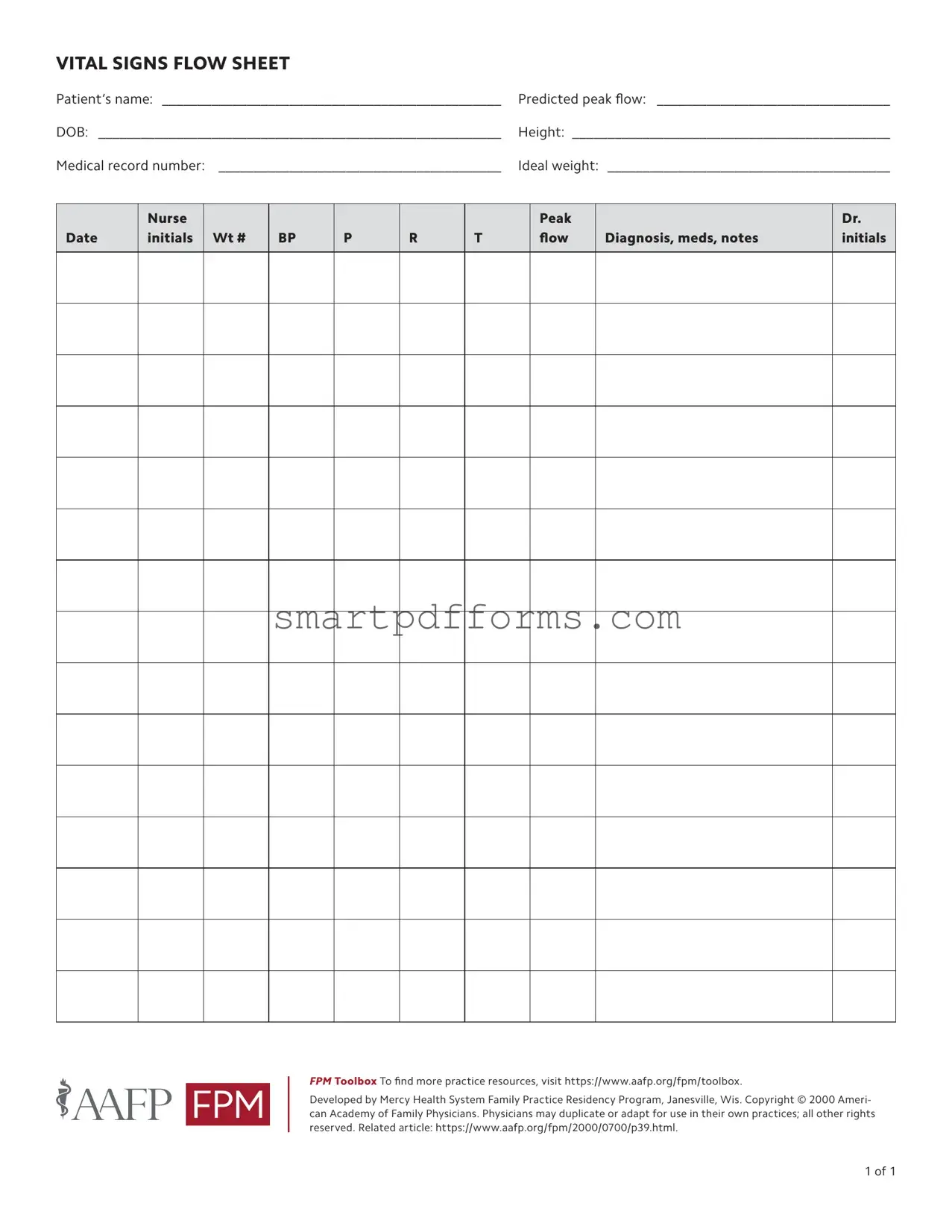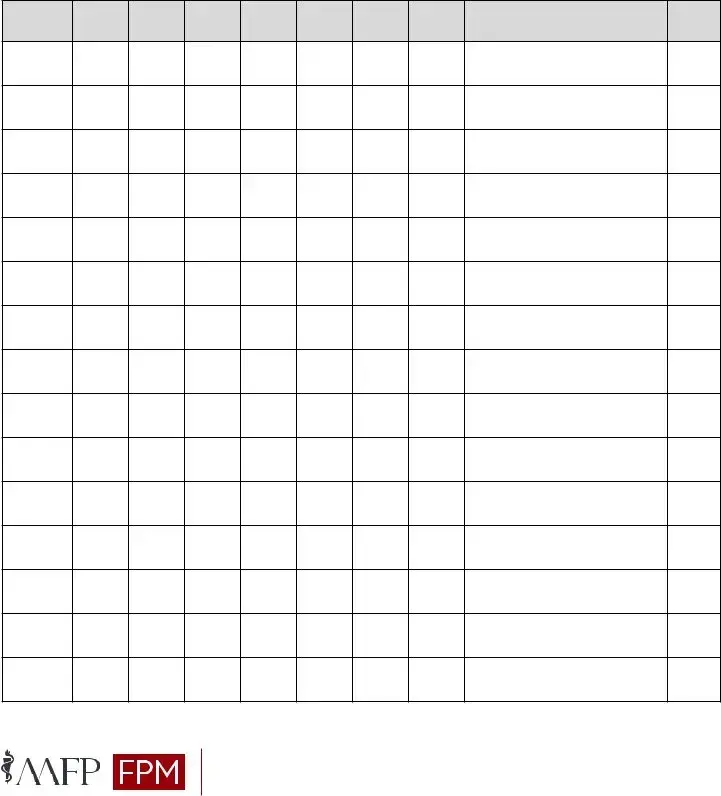Blank Vital Signs Flow Sheet PDF Template
The Vital Signs Flow Sheet form serves as a comprehensive tracking tool, designed to record patient information including name, date of birth, medical record number, and critical measurements such as weight, blood pressure, pulse, temperature, and peak flow. Developed by the Mercy Health System Family Practice Residency Program and endorsed by the American Academy of Family Physicians, this form is a crucial part of patient care, enabling healthcare providers to monitor vital signs over time, make informed decisions, and adjust medical treatments as necessary. For healthcare professionals looking to enhance patient monitoring and care, the Vital Signs Flow Sheet is an invaluable resource.
To start utilizing this form in your practice, click the button below.

